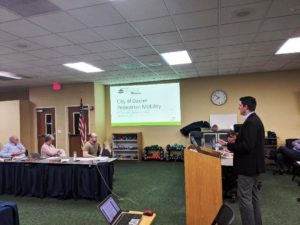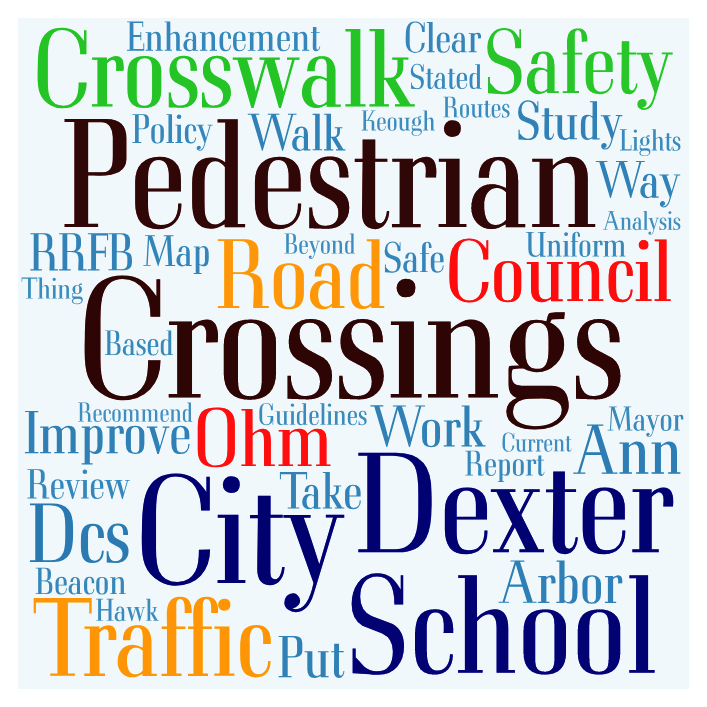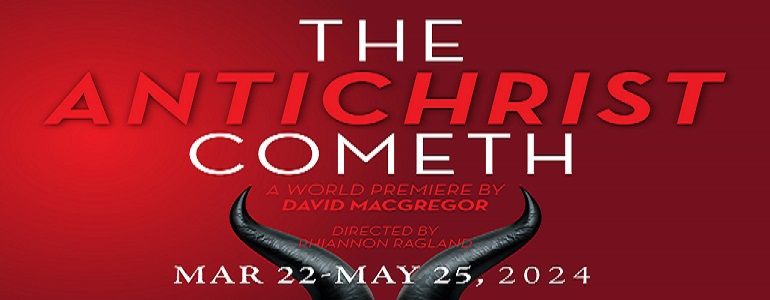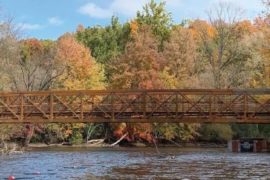Not moving at the speed of government, Mayor Keough and Dexter City Council have reviewed the DCS study on school crossings and are expeditiously and methodically taking steps to improve school crossings that go beyond the District’s original requests.
In his report to City Council on Feb. 25, Mayor Shawn Keough stated, “At our latest meeting with school representatives on February 12, 2019, we had another productive discussion. We discussed a broader view on how to improve the overall safety at crosswalks in the City, including those that the schools had identified in their report.”
If anything, Mayor Keough has understated the energy he and City Council are exerting to implement the highest safety standards for Dexter’s school crossings.
Patrick Droze of the engineering/consulting firm OHM presented council members with their review of the Pedestrian Crosswalk Assessment Report prepared by Midwestern Consulting and sponsored by Dexter Community Schools (DCS).

The study focuses on 4 pedestrian crossings:
- Baker Rd. at Creekside
- Dan Hoey at Dongarra
- Dan Hoey at Mill Creek’s back entrance
- Ann Arbor St. at Kensington
The study used a gap analysis to examine whether there are sufficient gaps in traffic to cross the road safely. Working through this methodology, the study concludes that Rectangular Rapid Flashing Beacons (RRFBs) are appropriate enhancements for each of these school crossings.
The City’s review (via OHM) of the study concurs with the District’s findings but goes even further emphasizing that the number of students walking to school is currently suppressed and would greatly increase if road crossings are made safer. With this in mind, OHM is encouraging the City to take a universal approach for pedestrian crossings.
OHM’s report states, “Through the review process, it has become clear that a more formal policy is necessary to develop a uniform approach to considerations of crosswalk enhancements to ensure that the four crosswalks studied in detail are truly the ideal locations for enhancements.”
Droze explained to the Council that a methodical approach based on established guidelines “gives us a guiding way to make sure that when we make the recommendation for a traffic control device, it’s done in a way that is uniform and is done in a way that we’re not overusing signs.”
He adds that it will prevent motorist desensitization to crosswalk alerts. “When we put up the sign we want to put it up for reason,” Droze said. “It should compel drivers to pay attention to it. It should invoke some sort of behavior. If we put up too many of them, they lose their power. So we’re very careful about where they go. We want to put those in spots that make sense.”
In essence, the City is raising the bar for safety at the four crossings by not only looking at RRFB enhancement, but also analyzing traffic and pedestrian movement to determine the optimally safe location for each. These determinations will be in conjunction with the development of a strategic walking map showing the safest routes to school. Walking corridors from larger neighborhoods such as Dexter Crossing, Huron Farms, Westridge and along Ann Arbor Street will be included with crossing points based on shortest routing.
In doing this, the City goes beyond the initial 4 crossings initially requested by DCS to take a larger, global view of the entire town. OHM recommends safety upgrades for a total of 12 school crossings around Dexter. Not all upgrades involve RRFBs, but involve components such as improved lighting, signage, curb work, and markings. This is all in addition to the proposed and budgeted sidewalk construction, enhancement, and repair that are already part of the City’s Master Plan budgeted for this year.

Following OHM’s recommendation, the City will first adopt uniform pedestrian crossing guidelines and develop the walking map. Once these are accomplished, OHM will formally recommend the upgrades mentioned above as well as RRFBs and possibly HAWK signals.
A HAWK beacon (High-Intensity Activated crossWalK beacon) is a traffic control device used to stop road traffic and allow pedestrians to cross safely. It is officially known as a Pedestrian Hybrid Beacon (PHB).
In considering HAWK beacons, the City also goes beyond the initial request by DCS for RRFBs. The difference between the two signals is:
- RRFBs flash yellow lights at the side of the road signaling to traffic the presence of pedestrians. Motorists may proceed with caution through the crosswalk once the pedestrian is clear of their lane.
- HAWKs flash red lights over the road signaling motorists to stop. Drivers may proceed when the red lights stop and the lane is clear of pedestrians.

HAWK signals flash red lights over the traffic lane signaling cars to completely stop
As a model for creating their own policy for pedestrian crossings, the City of Dexter is looking closely at the guidelines used by the City of Ann Arbor and Washtenaw County Road Commission, both of whom have employed very robust practices to improve pedestrian safety.
Drozer told the council, “We know Ann Arbor has gone above and beyond with their policy to really try to create a uniform policy they can apply across the road segments, and Washington County also has done similar types of things.”
He adds, “One of the things when we get into traffic control devices is that consistency with surrounding communities is a good idea. It’s not a bad thing if Washtenaw County is doing it the same way or Ann Arbor is doing it the same way. Many drivers from Dexter are headed to Ann Arbor and vice versa. There are benefits to having consistency.”
Dexter’s current pedestrian crossings are based on a Safe Routes to School analysis which was performed for DCS by the Michigan Fitness Foundation in 2013. OHM explains the current tension with pedestrian crossings is a result of Dexter’s growth in recent years.
“The ever-present increase of population, traffic volumes and changing guidance require that road agencies such as Dexter must from time to time review certain measures for adequacy,” states OHM’s review.
In conclusion, the City has placed pedestrian safety at the top of their action list, quickly formulating a uniform method which works to consider merit and need based on technical analysis and engineering judgment. The City is not just addressing current needs, but setting the stage for future consistency in pedestrian safety.
But the solution is not all data, analysis, and implementation, Droze concludes. He highlights a point Mayor Keough has maintained all along – education as to how enhanced crossings operate and vehicle right of way is critical to improved safety.
Droze states, “One of the most important things, as we coordinate all these findings and put them into maps and policies, is an education campaign to really let everybody know the selected routes and how they work.”
City Manager Courtney Nicholls sequentially organized the next steps the City needs to take:
- Create and come to an agreement with DCS on a walk to school map.
- Adopt the crosswalk guidelines.
- Officially designate the school crossings.
- Work on funding and scheduling the projects for possibly as early as summer 2019.
Not moving at the speed of government, the City is working to have Dexter’s pedestrian guidelines adopted and the walking map finished within two weeks in time for their next meeting with the District on Tuesday, March 12.
The DCS sponsored study and City Council’s review of it can be found here, pgs 61-107.









